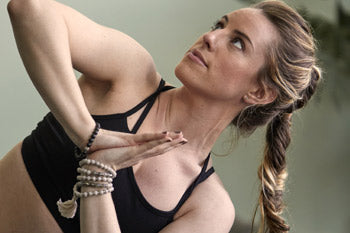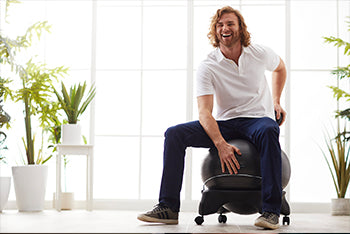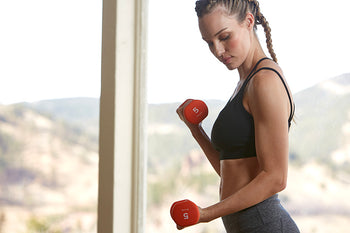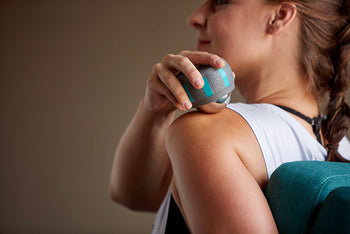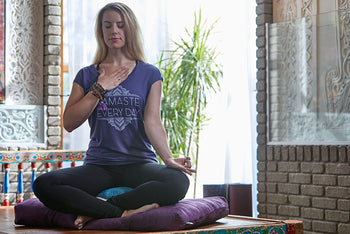Yoga for All Seasons: Winter

by: Nichole Golden
It is important that we change with the seasons just as nature does by adapting our daily habits, yoga practice and food choices. During the winter season, the energy of the Earth and its creatures is drawn inward. We can use this time for restoration and introspection, just as many plants and animals use it for hibernation. In preparation for the spring, it is important to slow down and rejuvenate.
An Ayurvedic Approach to Winter
There is a rule in Ayurveda (the sister science to yoga), that “like attracts like.” That is why the kapha and vata doshas can become provoked and aggravated during the dry, dark, cold months of Winter. This is because the climate is alike the qualities of these two doshas. If kapha or vata are triggered, digestive fire plummets, leaving you more susceptible to colds, poor circulation, joint pains and negative emotions. Here are some yoga and lifestyle tips that can help you to balance your doshas this season.
5 Winter Yoga Poses
The winter months are notorious for colds and flus, so poses that open the chest, throat and sinuses will aid in improving congestion and supporting your respiratory organs. The following poses are metabolically invigorating and help to warm the kidneys and clear phlegm.- Sun Salutation (Surya Namaskara): This invigorating invocation to your yoga practice helps build heat in the body. Do up to 12 rounds.
- Fish Pose (Matsyasana): This supine backbend/inversion opens the throat and chest. Do up to three sets.
- Bow Pose (Dhanurasana): Open your chest with this backbend. Do up to three sets.
- Shoulderstand (Salamba Sarvangasana): This supported inversion helps with stagnation of lymph. Do one time and hold for a minimum of 12 breaths.
- Locust Pose (Salabhasana): This “baby backbend” opens the chest while strengthening the back. Do up to three sets.
- Follow this sequence with Breath of Fire Pranayama, also know as kapalabhati breathing, a practice that builds internal heat and eliminates mucus from the respiratory tract. These are rapid, sharp exhales, passive inhales, and a snapping of your lower abdomen. You can start with cycles of 30 breaths and gradually increase up to 100, for 3-5 rounds.
Winter Foods and Herbs
If your natural tendency is to eat warmer and heartier meals during the winter, you are on the right track! In response to cold weather, the body constricts the pores on your skin and the superficial connective tissue to prevent heat loss. This directs heat away from the peripheral tissues and into the body’s core. Because of this, your appetite becomes stronger in Winter.
However, although we are designed to eat more in the winter, the selection of foods is still important. Try to pick foods that will keep your immune system vibrant and that minimize congestion.
- Eat a plentiful amount of soups/stews, grains (oatmeal, rice, barley, quinoa, etc.), healthy oils (coconut, avocado, olive, ghee) and cooked seasonal root vegetables (kohlrabi, turnips, rutabaga, celeriac, carrots and turnips). Avoid vata-provoking foods, such as salads and cold drinks.
- Drink warm teas, and if you're looking for a good bottle to keep it warm all day try our 32 oz Stainless Steel Wide Mouth Bottle. An occasional glass of wine is also seasonally appropriate! One glass of dry and warming wine a day may be beneficial in the winter to encourage circulation, improve appetite and stimulate digestion. It is beneficial to start and end the day with a glass of warm lemon water to aid with digestion.
- Be sure to eat a hearty, warm breakfast to break the fast of your night’s sleep, feed your digestive fire and lubricate your bodily tissues. Oatmeal, porridge, or cream of wheat are all good options.
- Warming spices to include to any and all meals: cinnamon, cloves, black pepper, cardamom, fennel, cumin, coriander and nutmeg.
Lifestyle choices
- Kapha is the slowest moving of the three doshas, so a good workout routine will combat your kapha tendencies. Try doing some kind of invigorating exercise in the morning to boost immunity and mood and kick-start the movement of lymph. This helps prevent build-up of mucus and congestion.
- Start your day by 7:00 a.m. This might be a bit later than you are used to, but Winter encourages us to hibernate a little longer at night. Remember that Winter is a natural time for resting. So at night, do peaceful and calming activities that promote a sense of stillness. Try to go to bed earlier than you are used to.
- Use a warm-mist humidifier at night to help keep your sinuses clear. And use a neti pot once a day to irrigate and moisten your nasal passages.
- Soak up as much sunshine as you can by sitting by a window or taking a winter walk. Sunlight helps your body produce vitamin D (which is crucial to ward of illness), relaxes the muscles, combats seasonal mood disorders, and aids the body in maintaining healthy sleep cycles. But remember: Sunscreen is a must, even in Winter! No sun in sight? Try mood-boosting light therapy.
Also in Blog

Body Peace & Personal Empowerment

Yoga for Swimmers: Poses for Strength and Mobility


